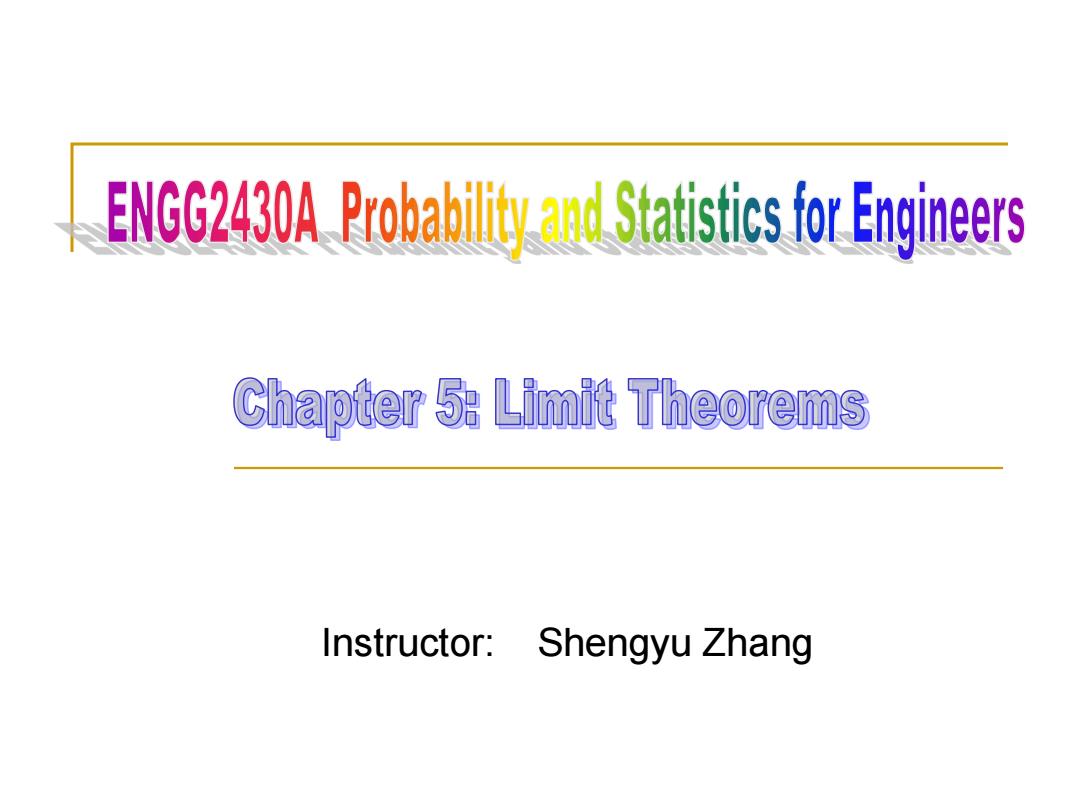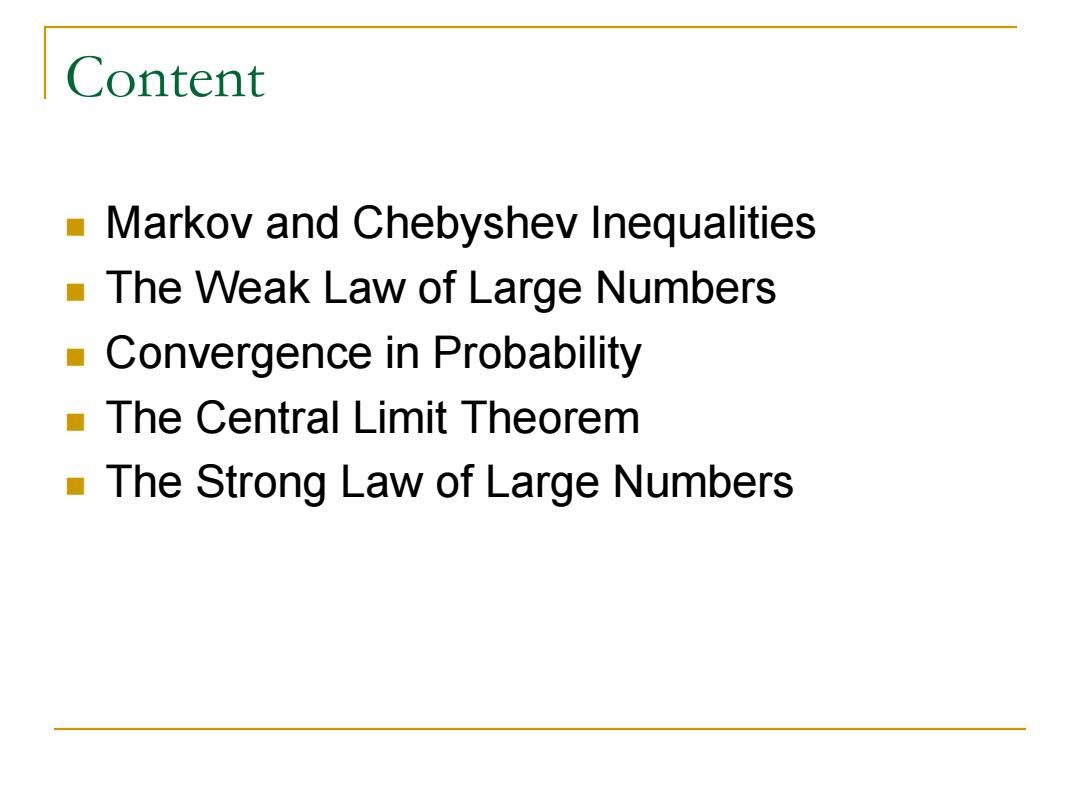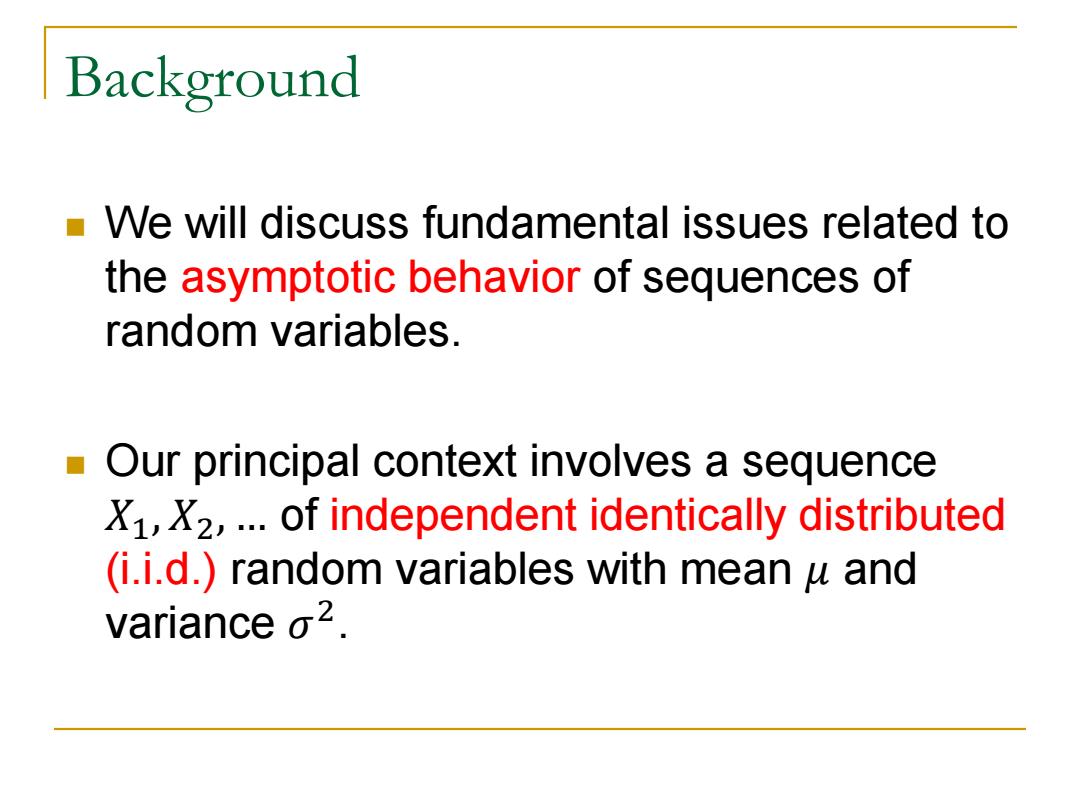
ENGG40Proatatisticsfoner Chapter 5:Limit Theorems Instructor:Shengyu Zhang
Instructor: Shengyu Zhang

Content Markov and Chebyshev Inequalities The Weak Law of Large Numbers ■ Convergence in Probability The Central Limit Theorem The Strong Law of Large Numbers
Content Markov and Chebyshev Inequalities The Weak Law of Large Numbers Convergence in Probability The Central Limit Theorem The Strong Law of Large Numbers

Background -We will discuss fundamental issues related to the asymptotic behavior of sequences of random variables. Our principal context involves a sequence X1,X2,...of independent identically distributed (i.i.d.)random variables with mean w and variance o2
Background We will discuss fundamental issues related to the asymptotic behavior of sequences of random variables. Our principal context involves a sequence 𝑋1, 𝑋2, … of independent identically distributed (i.i.d.) random variables with mean 𝜇 and variance 𝜎 2

Background Let Sn=X1+…+Xn be the sum of the first n of them. Limit theorems are mostly concerned with the properties of S and related random variables as n becomes very large
Background Let 𝑆𝑛 = 𝑋1 + ⋯ + 𝑋𝑛 be the sum of the first 𝑛 of them. Limit theorems are mostly concerned with the properties of 𝑆𝑛 and related random variables as 𝑛 becomes very large

Background Because of independence,we have var(Sn)=var(X1)+..+var(Xn)=no2 The distribution of s spreads out as n increases Thus S cannot have a meaningful limit. But the situation is different if we consider the sample mean Mn= X1+..+Xn Sn n n
Background Because of independence, we have var 𝑆𝑛 = var 𝑋1 + ⋯ + var(𝑋𝑛) = 𝑛𝜎 2 The distribution of 𝑆𝑛 spreads out as 𝑛 increases Thus 𝑆𝑛 cannot have a meaningful limit. But the situation is different if we consider the sample mean 𝑀𝑛 = 𝑋1+⋯+𝑋𝑛 𝑛 = 𝑆𝑛 𝑛